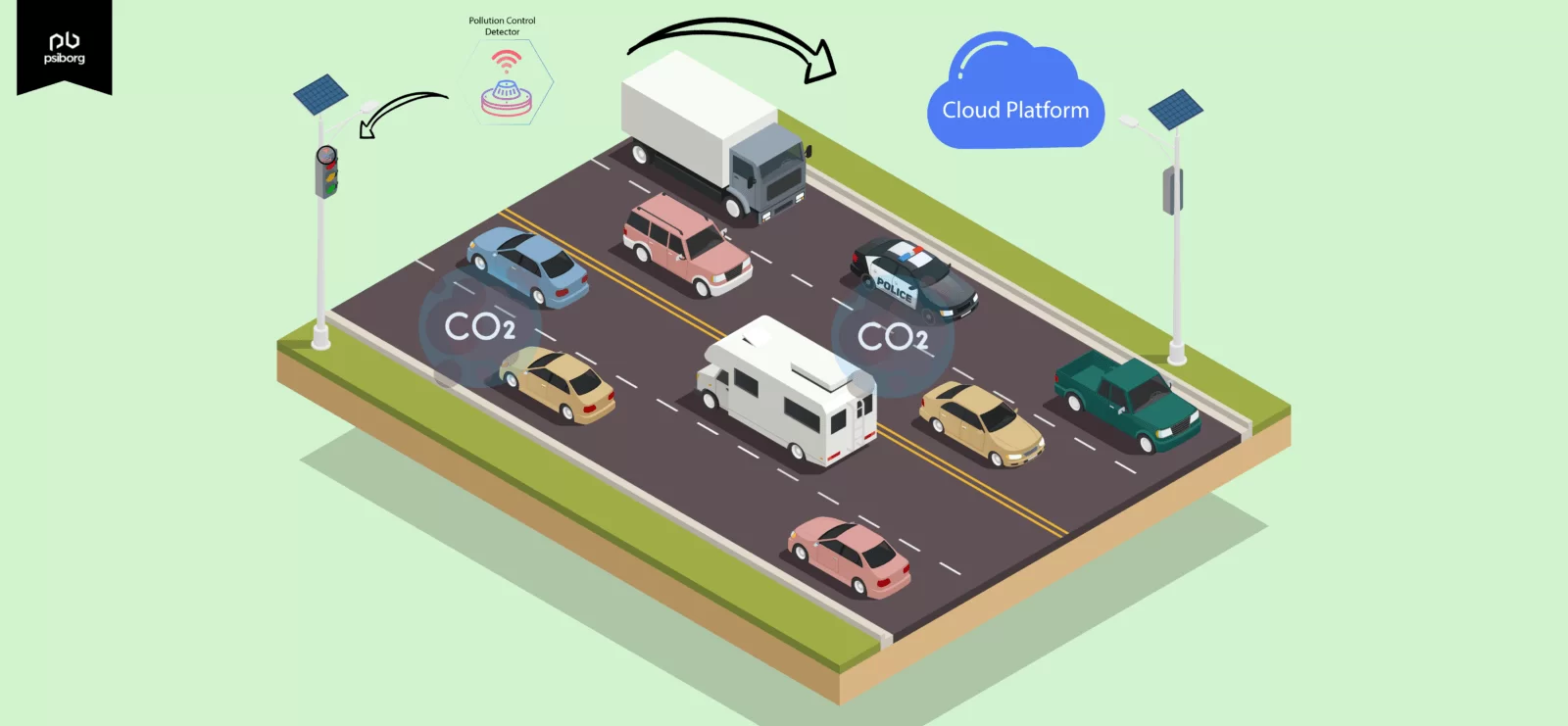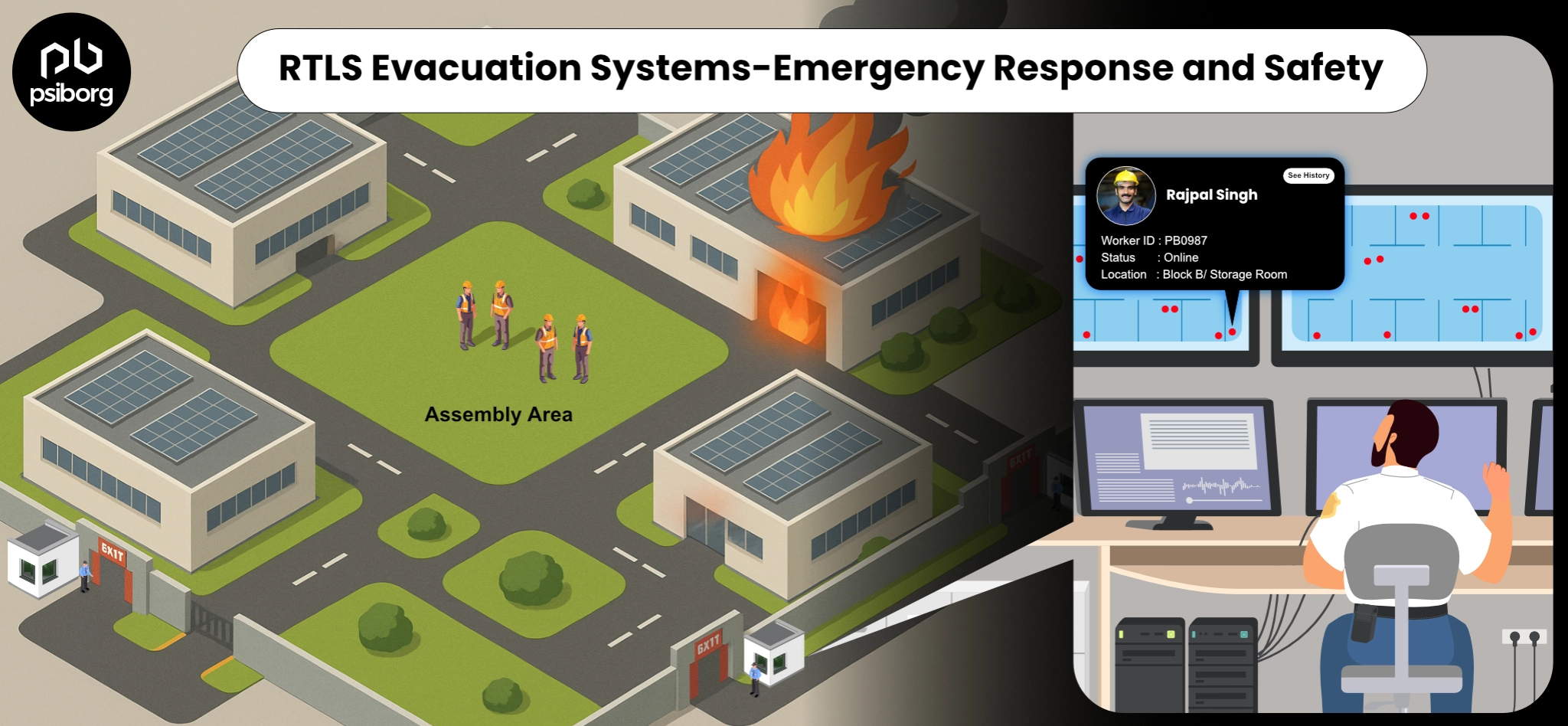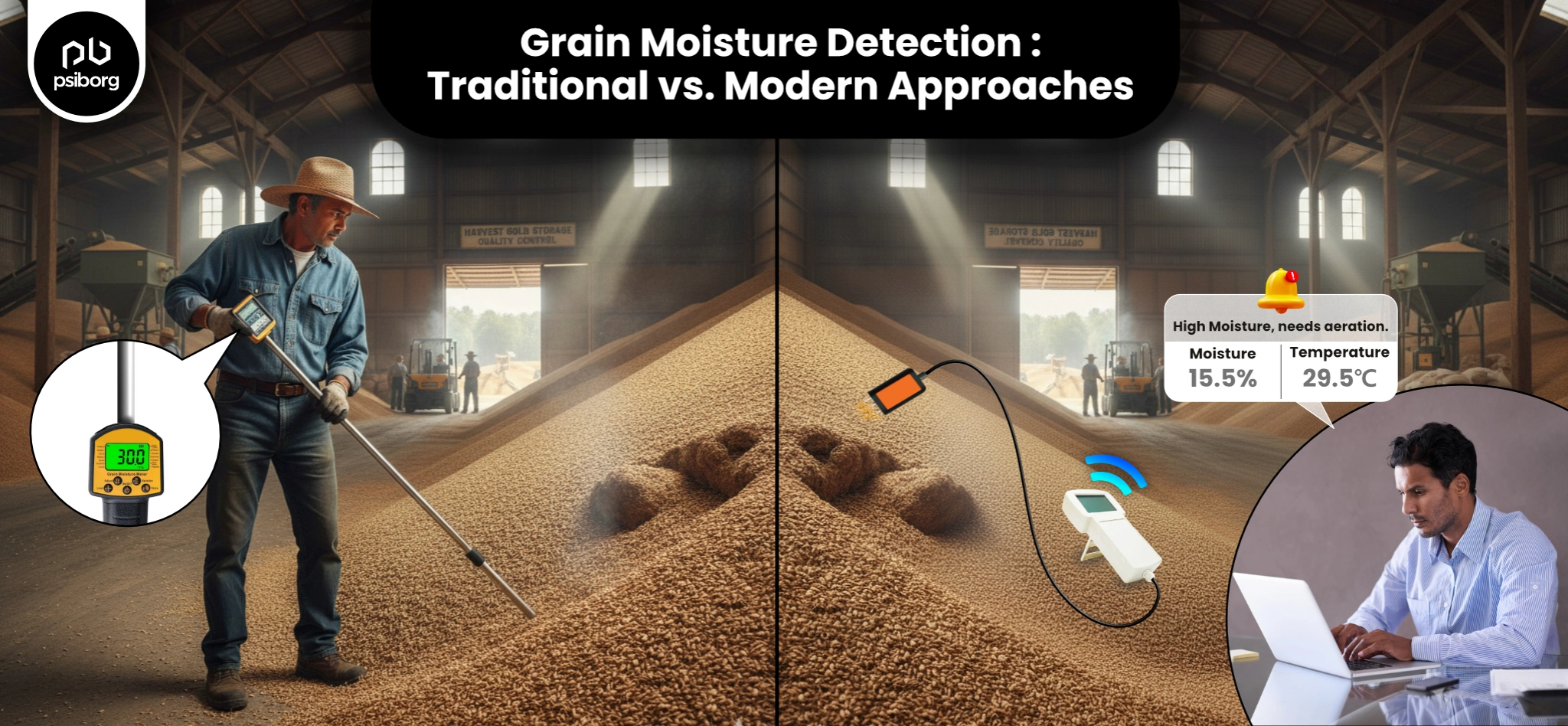With the increased awareness of the impact of environmental factors on health, there has been a spike in the demand for environmental monitoring solutions. An air quality monitoring system is one of those solutions.
Plus, with the release of compliance rules and regulations related to the optimal AQI (air quality index), an air quality monitoring system using IoT will help companies identify the air pollution source and take action accordingly.
PsiBorg develops air quality monitoring using IoT for businesses across all industries. The solutions are designed and developed to monitor air pollution levels in real-time, meet challenging monitoring requirements, and prevent health impacts caused by air pollution.
In this blog, we will break down all the important aspects of an air pollution monitoring system, so keep reading.
WHAT IS AIR QUALITY MONITORING?
Air Quality Monitoring is a process to measure ambient air pollution levels. Here, the data received from ambient sensors indicates the status of the quality of the air we breathe. Therefore, air quality monitoring using IoT is carried out. It can be accessible to every human being to check the quality of the air they breathe.
Besides this, the collected data, allows us to trace out patterns to find spatial as well as temporal differences in pollution.
Here, the spatial difference is to find out which areas of the city are more polluted. Whereas, the temporal difference is to find out the pattern of pollution levels during the day and/or over the seasons.
So, air pollution monitoring system itself does not reduce pollution, however, it gives us clues on how much pollution there is and its spatial and temporal differences.
WHY IS MONITORING OF AIR REQUIRED?
As per the WHO, 90% of the world’s population breathes harmful air coming from industries burning fossil fuels, conducting chemical processes, mixing, and drilling in mines and tunnels, which leads to 7 million deaths per year.
Also, these industries emit a large number of toxic gases like Carbon Dioxide, Carbon Monoxide, Methane, Sulphur Dioxide, etc., and inhaling these gases can cause serious health hazards.
Since all of this leads to poor air quality, it is important to monitor the gases around us. IoT-based smart air pollution monitoring helps in accessing toxic and flammable gas proportions in the air.
WHAT IS IOT BASED AIR POLLUTION MONITORING?
Indoor air quality monitoring systems using IoT are developed using sensors and microcontrollers. A sensor network to collect data on air quality is created. The microcontrollers are programmed to use air pollution monitoring sensors as input and transmit the data to the cloud. An algorithm is developed to analyze the data and send it to the Mobile application or an IoT dashboard. A smartphone app will be developed for users to access air quality information in real time.
An Air Quality Monitoring System using IoT consists of electrochemical sensors that monitor the constituents that result in pollution like aerosol, VOC, CO, CO2, and temperature-humidity.
Further, it will trigger an alarm when the air quality goes down beyond a certain level, which means when there is a number of harmful gases present in the air. The system shows the air quality in PPM on the display, the web page, or in the mobile application, so that it can be monitored very easily.

ANALYSIS OF COLLECTED DATA
Air pollution monitoring systems are useful because they collect data from various sensors that measure gases in the air. This data is then analyzed by a microcontroller, which calculates the pollution level in PPM (parts per million). Gas sensors give the output in the form of voltage levels; using analog-to-digital conversion, the digital data is outputted. The data fetched is sent to the server using a WiFi, cellular network, or any other LPWAN protocol. In addition, the sensors make use of LoRa, a low-powered wireless solution.
IoT Dashboards, web apps, or mobile applications read the data from the database and create data visuals for the user.
MOBILE AIR QUALITY MONITORING
Cities today use fixed air quality monitoring systems similar to fuel stations to measure pollution levels throughout the city. While these can give extremely high levels of accuracy, they have high prices as well, which makes it difficult for the authorities to achieve coverage in the whole city.
To solve this problem, IoT technology with mobile air quality monitoring reduces the cost, increases coverage, and provides more flexibility as compared to traditional air quality monitors.
The mentioned air quality monitors, rather than measuring gases in parts per million, provide information like a traffic light system-
- Red – harmful,
- Amber – warning,
- Green – good.
Although they don’t provide the exact number, the sensors are quite accurate for a fraction of the price of fixed stations.
Local authorities can easily access air quality across vast areas of land. While it cannot deliver lab-grade results, the sensors can provide a fairly good indication of the air quality of a large area.
This result can be stored with time stamps, large amounts of data can be analyzed for a particular area, and policies can be made for places that consistently have a poor air quality index.
Also Read: Water Quality Monitoring System
BENEFITS OF AIR QUALITY MONITORING
- Better monitoring and information that impacts regulations for air quality control.
- Better planning is needed for hospital placements in areas with low air quality for better treatment of sick patients.
- Empower city residents to make more informed decisions that can limit their exposure to harmful gases.
- Planning of industrial areas so that they are not concentrated in one place and release harmful gases.
OXYGEN MONITORING
It is surprising to believe that oxygen in a city like Noida is not 21% (we have been reading this since our school days).
Instead, it is 19% when measured through sensors, which in itself is almost 9.5% less than the ideal air that we should breathe.
In conclusion, the use of IoT enhances the process of monitoring various aspects of the environment. Such as air quality monitoring, indoor air monitoring, the number of specific gases in the air, etc, which anyone can view with a single click?
We, at PsiBorg, have built various IoT solutions for environmental monitoring. If you are looking for a partner to help you in building your concept into a product.
Get in touch with us today.
FAQ
An IoT-based air quality monitoring system encompasses several air pollution detection sensors. For example- a NO2 sensor, a particulate matter sensor, a CO (carbon monoxide) sensor, and an O3 (ozone) sensor. Moreover, these sensors measure the percentage presence of specific pollutants in the air to assess air quality.
Seeing the increased pollution level and its effect on human health, it’s obvious that the future scope of an air pollution monitoring system is very promising. Integrating with emerging technologies and smart city infrastructure, these systems will offer improved accuracy and comprehensive coverage for environmental monitoring.
An IoT based air quality monitoring system includes interconnected sensors that measure various air quality parameters. A few examples of these sensors include particulate matter, gases, and other environmental conditions. These sensors collect data in real-time and transmit it wirelessly to a central system through IoT. Thus, this approach allows for the timely detection of pollution levels and promotes data-driven decision-making for environmental quality management.





